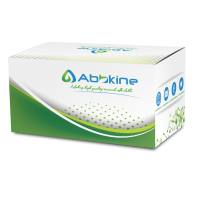A Gi RNA-Antisense Expression Strategy to Investigate Coupling of Peptide YY/Neuropeptide Y Receptor to Gi
互联网
646
Following its discovery in rat intestinal epithelial cells (1
), the peptide YY (PYY) receptor has been characterized in the proximal tubule PKSV-PCT cell line derived from kidneys of
SV40 large T antigen transgenic mice (2
). This receptor is PYY preferring since it binds the intestinal hormone PYY (3
) with high affinity and neuropeptide Y (NPY) (3
) with a 5–10-fold lower affinity (1
–3
). PYY and NPY trigger several biological effects through interaction with PYY receptors including inhibition of adenylyl
cyclase activity (4
), and Clsecretion in small intestine (3
), inhibition of lipolysis in fat cells (5
), and stimulation of epithelial cell growth (2
,6
). PYY receptor pharmacology is clearly different from that of other receptors for the PP-fold family of peptides, including
the Y1, Y3, Y4, Y5, and Y6 subtypes. The PYY receptor resembles the Y2 subtype of NPY receptor, which does not discriminate
between PYY and NPY, but, like the PYY receptor, binds with high affinity long COOH-terminal fragments of PYY or NPY (4
,7
). The intestinal PYY receptor has not been cloned yet, but it has been characterized as an M
r
44,000 glycoprotein by crosslinking experiments and hydrodynamic studies (8
).









